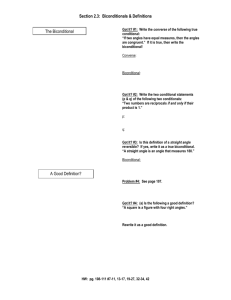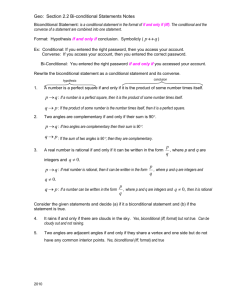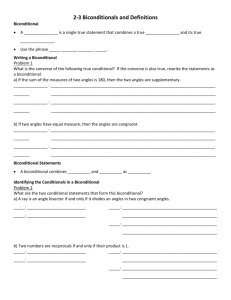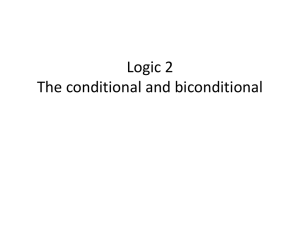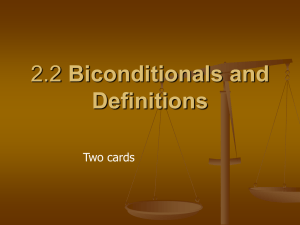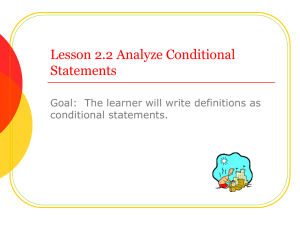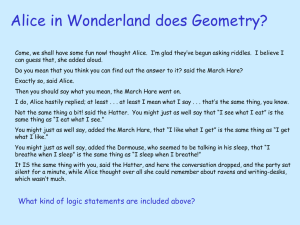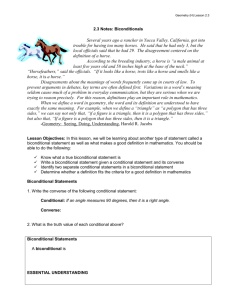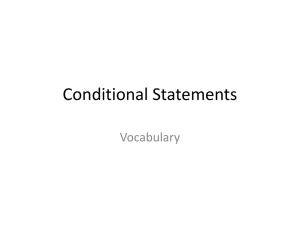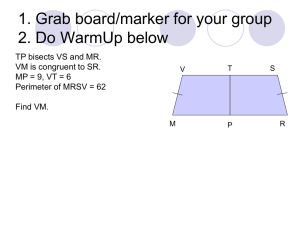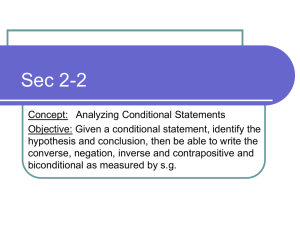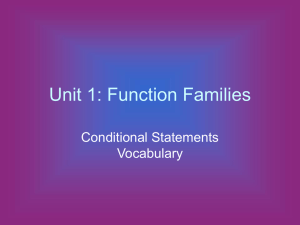Sect2_3_Biconditionals
advertisement
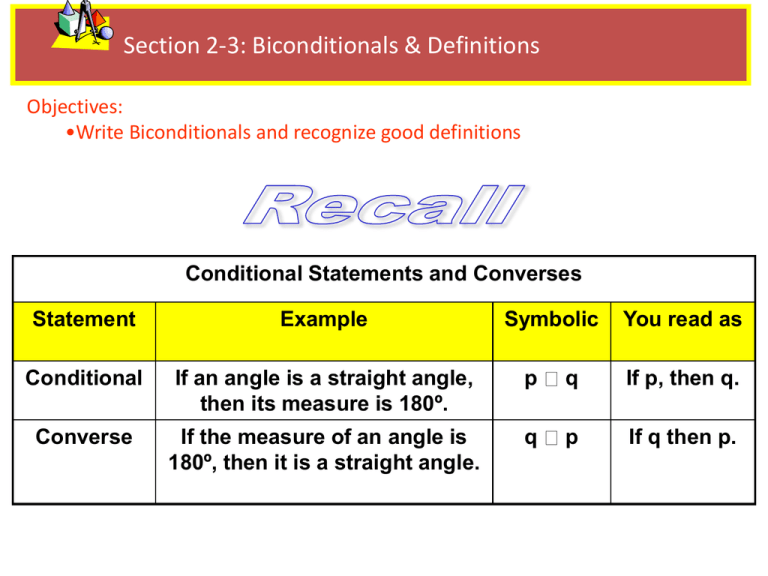
Section 2-3: Biconditionals & Definitions Objectives: •Write Biconditionals and recognize good definitions Conditional Statements and Converses Statement Example Symbolic You read as Conditional If an angle is a straight angle, then its measure is 180º. p q If p, then q. Converse If the measure of an angle is 180º, then it is a straight angle. q p If q then p. Form of a Conditional Statement p q • Write a bi-conditional only if BOTH the conditional and the converse are TRUE. • Connect the conditional & its converse with the word “and” • Write by joining the two parts of each conditional with the phrase “if and only if” of “iff” for shorthand. • Symbolically: p q Bi-conditional Statements Conditional Statement: If two angles have the same measure, then the angles are congruent. Converse: If two angles are congruent, then they have the same measure. Both statements are true, so…. …you can write a Biconditional statement: Two angles have the same measure if and only if the angles are congruent. Write a Bi-conditional Statement Consider the following true conditional statement. Write its converse. If the converse is also true, combine the statements as a biconditional. Conditional: If x = 5, then x + 15 = 20. Converse: If x + 15 = 20, then x = 5. Since both the conditional and its converse are true, you can combine them in a true biconditional using the phrase if and only if. Biconditional: x = 5 if and only if x + 15 = 20. Separate a Biconditional • Write a biconditional as two conditionals that are converses of each other. Consider the biconditional statement: A number is divisible by 3 if and only if the sum of its digits is divisible by 3. Statement 1: If a number is divisible by 3, then the sum of its digits is divisible by 3. Statement 2: If the sum of a numbers digits is divisible by 3, then the number is divisible by 3. Separate a Biconditional Write the two statements that form this biconditional. Biconditional: Lines are skew if and only if they are noncoplanar. Conditional: If lines are skew, then they are noncoplanar. Converse: If lines are noncoplanar, then they are skew. Writing Definitions as Biconditionals • Good Definitions: Help identify or classify an object Uses clearly understood terms Is precise avoiding words such as sort of and some Is reversible, meaning you can write a good definition as a biconditional (both conditional and converse are true) Show definition of perpendicular lines is reversible Definition: Perpendicular lines are two lines that intersect to form right angles Conditional: If two lines are perpendicular, then they intersect to form right angles. Converse If two lines intersect to form right angles, then they are perpendicular. Since both are true converses of each other, the definition can be written as a true biconditional: “Two lines are perpendicular iff they intersect to form right angles.” Writing Definitions as Biconditionals Show that the definition of triangle is reversible. Then write it as a true biconditional. Steps 1. Write the conditional 2. Write the converse 3. Determine if both statements are true 4. If true, combine to form a biconditional. Definition: A triangle is a polygon with exactly three sides. Conditional: If a polygon is a triangle, then it has exactly three sides. Converse: If a polygon has exactly three sides, then it is a triangle. Biconditional: A polygon is a triangle if and only if it has exactly three sides. Writing Definitions as Biconditionals Is the following statement a good definition? Explain. An apple is a fruit that contains seeds. Conditional: If a fruit is an apple then it contains seeds. Converse: If a fruit contains seed then it is an apple. There are many other fruits containing seeds that are not apples, such as lemons and peaches. These are counterexamples, so the reverse of the statement is false. The original statement is not a good definition because the statement is not reversible. Statement Example Symbolic You read as Conditional If an angle is a straight angle, then its measure is 180º. p q If p, then q. Converse If the measure of an angle is 180º, then it is a straight angle q p If q then p. Inverse If an angle is not a straight angle, then its measure is not 180. ~p ~q If not p, then not q Contrapositive If an angle does not measure 180, then the angle is not a straight angle. ~q ~p If not q, then not p. Biconditional An angle is a straight angle if and only if its measure is 180º. p q p if and only if q. P iff q
